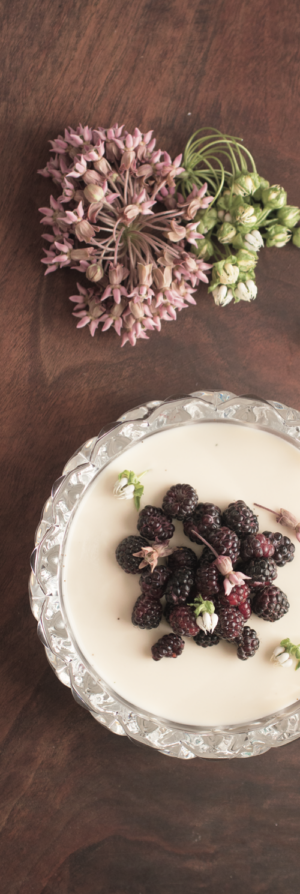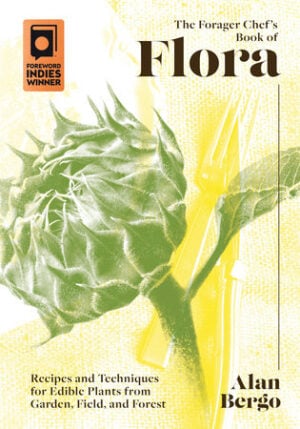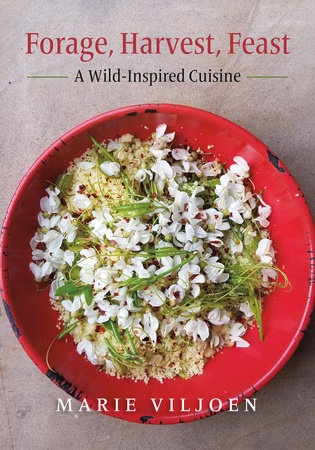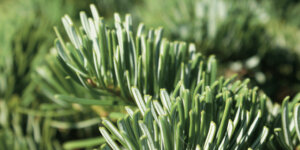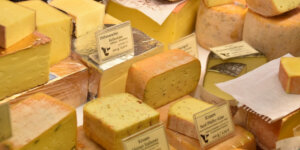Panna Cotta With Galium: A Sweet Stand-In For Vanilla
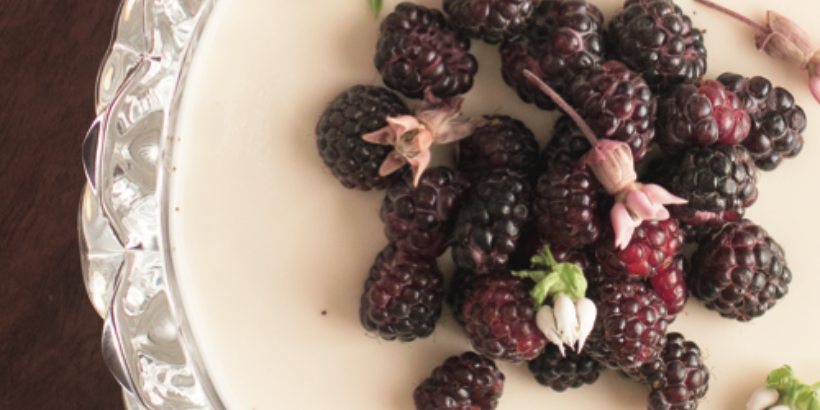
Who needs a spoonful of sugar to help the medicine go down when you have galium? This wild herb not only has a sugary sweet aroma on its own, but can also add a delicious vanilla-like flavor when added to desserts.
Forage for your own galium in the woods or even your own backyard to create the dessert of the summer: Sweet Galium Panna Cotta!
The following is an excerpt from The Forager Chef’s Book of Flora by Alan Bergo. It has been adapted for the web.
Sweet Galium: What Is It?
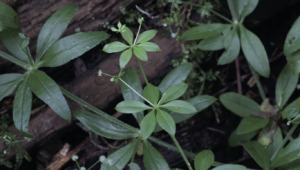
I knew from images that woodruff was a type of cleaver or bedstraw, an ubiquitous weed easily identified through its creeping, vine-like structure and the whorls of leaves that circle the stem. Every type of bedstraw I smelled, though, just smelled like grass. I thought it must be some incredibly rare cousin I’d need to find, a botanical needle in a haystack. On a whim, I brought a handful of some of the most common galium home, tossed it unceremoniously into the dehydrator, and went into the other room to work.
Spreading the Sweetness
Not 20 minutes later, a strong vanilla scent crept out of the other room, calling to me, pulling me like the white fingers of aroma in a cartoon. I jumped up and down—I’d found it! It was just a common weed, and it was everywhere! I couldn’t believe it. The entire top floor of my apartment building reeked of vanilla for hours. It’s one of the most powerfully aromatic plants I’ve ever come across, and it was hiding in plain sight.
Since then, my love for this common weed has only grown, and I use it in all kinds of things. Harvesting, storage, and cooking with it couldn’t be easier, and it can be used any- where you’d like the taste of vanilla. The aroma is so strong, in fact, that you can make your own homemade vanilla extract from it! I’ve included a few simple recipes here to get you started, but the only limit to how this herb can be used is your imagination. Besides the simple panna cotta and extract below, add a handful to Black Walnut Preserves or any sort of homemade alcohol infusion, for the delicious vanilla note it imparts.
RECIPE: Sweet Galium Panna Cotta
Serves 8
A tribute to the panna cotta that Chef Jim Christiansen, formerly the chef of Heyday in Minneapolis, used to run on his menu. Sweet galium would love to be infused into just about any dairy-based dessert, but it’s hard to beat a good panna cotta, the classic Italian, scented-cream dish that just might be the most perfect summer dessert out there when paired with fresh berries or a fresh fruit sauce.
You can halve this recipe using two sheets of gelatin or 2 teaspoons of powder.
Ingredients
- 1/4 cup (3 g) packed (a good handful) dried galium leaves and stems
- 3 cups (720 ml) heavy cream
- 1/2 cup (135 ml) maple syrup or sugar
- 3 1/2 sheets gelatin or 3 1/2 teaspoons of powdered gelatin
- 1 cup (220 g) thick Greek yogurt
Process
Wrap the galium in cheesecloth for easy removal later. Heat the cream, maple (syrup or sugar), and galium until steaming, then remove from the heat and cool to room temperature, allowing the galium to infuse for at least an hour or so, or up to 8 hours. Afterward, remove the galium and discard.
Soak the gelatin in ice water until soft, about 4 or 5 minutes, then add it to the cream mixture and reheat it gently, whisking to dissolve the gelatin.
If you use powdered gelatin, purée this with a hand blender to break up any lumps. Finally, whisk in the yogurt. Pour the mixture into ramekins or other small vessels (jam jars, custard cups, teacups) to set, and refrigerate overnight.
To serve, unmold the panna cotta by sliding a paring knife around the edge and gently releasing them, or serve them in their individual vessels, topped with a dollop of jam or fruit sauce and fresh berries.
Recommended Reads
Recent Articles
The scent of fir trees is a holiday staple 🎄 Imagine sipping a festive cocktail infused with the unmistakable taste of fir ✨ This holiday season, elevate your entertaining game by introducing fir to your menu – from classy cocktails to rustic potatoes!
Read MoreLooking for a way to use that leftover Thanksgiving Turkey? Shake things up this holiday season with a game-changing twist. Serve these easy-to-make appetizers with a side of Vietnamese dipping sauce for an extra kick of flavor!
Read MoreAttention all cheese lovers! If you’re looking for recipes to satisfy all your cheesy needs, then look no further.
Read More

